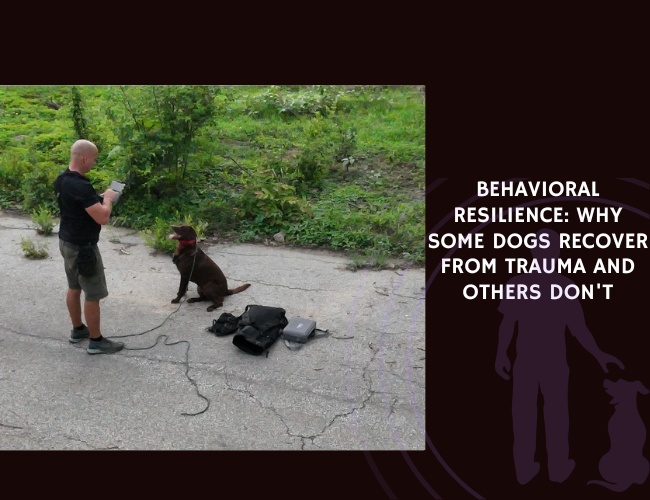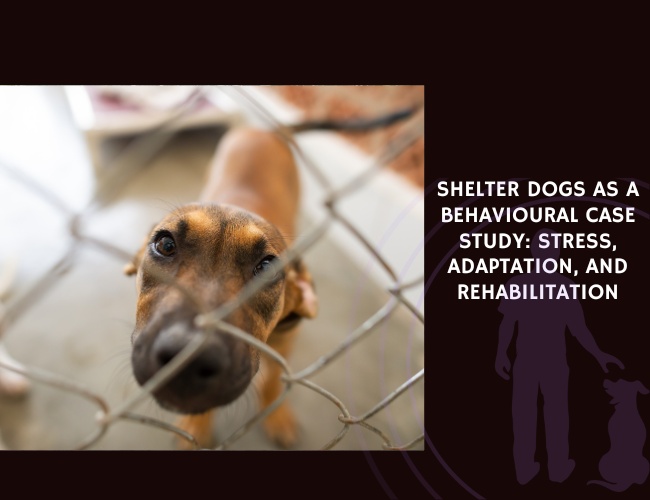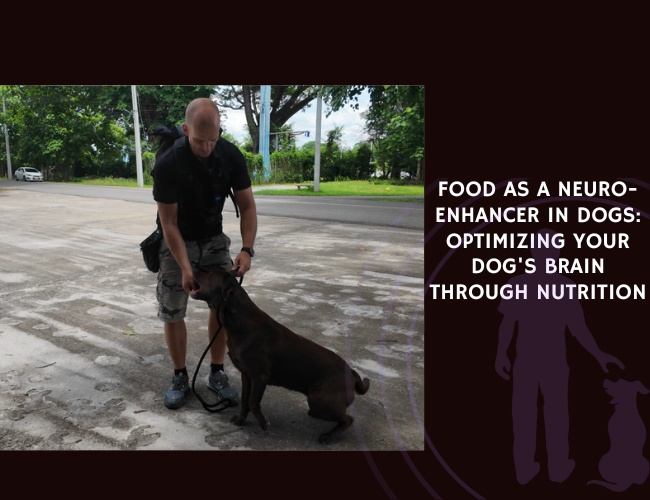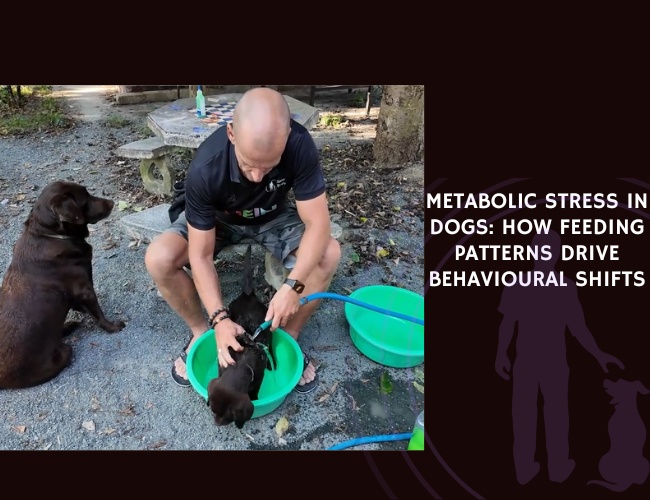Introduction: When Normal Habits Cross the Line
Have you ever watched your furry friend chase their tail for what seems like hours, or noticed them licking the same spot until it’s raw? These behaviors might seem quirky at first, but they could signal something deeper happening in your dog’s mind and body. Compulsive behaviors in dogs mirror aspects of obsessive-compulsive disorder in humans, affecting not just their daily routines but their entire quality of life.
Understanding these behaviors requires us to look beyond the surface. Your dog isn’t just being “weird” or “stubborn” – they’re often communicating distress through the only language they know. Let us guide you through the complex world of canine compulsions, where neuroscience meets everyday pet care, and where understanding leads to healing. Together, we’ll explore how these behaviors develop, what they mean, and most importantly, how you can help your beloved companion find peace again.
What Defines Compulsive Behavior in Dogs?
Understanding the Difference Between Quirks and Compulsions
You might notice your dog has certain habits – perhaps they circle three times before lying down, or always sniff the same corner on walks. These endearing quirks are part of what makes your furry friend unique. But when does a habit become a concern? The key lies in three crucial factors: frequency, duration, and the lack of functional purpose.
Normal habits serve a purpose – they reduce cognitive load and help your dog navigate their world efficiently. That pre-sleep circling? It’s an ancient behavior from wild ancestors who needed to pat down grass and check for dangers. But compulsive behaviors are different. They’re excessive, time-consuming repetitions that seem to serve no real purpose and often interfere with your dog’s ability to enjoy life.
The telltale signs of compulsion include behaviors that persist even when they cause self-harm. A dog who occasionally licks their paws after a walk is normal. But when that licking continues for hours, creating wounds that won’t heal, you’re witnessing something more serious. These behaviors often occur without any apparent trigger and can’t be easily interrupted – your dog seems almost in a trance.
Stereotypies vs. Displacement Behaviors: A Critical Distinction
Understanding the difference between stereotypies and displacement behaviors helps you better support your dog. Displacement behaviors are normal actions performed out of context – like a dog licking their lips when anxious or yawning when stressed. These are your dog’s way of saying “I’m uncomfortable” and usually pass quickly once the stressor is removed.
Stereotypies, however, are more concerning. These are fixed, persistent patterns that don’t respond well to environmental changes. Think of them as behaviors that have become “stuck” – like a record player needle caught in a groove. While displacement behaviors are flexible coping mechanisms, stereotypies indicate a deeper issue in your dog’s neurological or emotional state. They’re less about immediate stress relief and more about a fundamental disruption in how your dog processes and responds to their world. 🧠
The Root Causes: Why Dogs Develop Compulsive Behaviors
Genetic Predispositions and Breed-Specific Vulnerabilities
Just as some humans are more prone to anxiety or OCD, certain dog breeds carry genetic predispositions to compulsive behaviors. Your Bull Terrier’s endless tail-chasing isn’t just a personality quirk – research shows this breed has a particular vulnerability to this behavior, with some studies even linking it to partial seizures in their brain’s electrical activity.
Breed-specific risks paint a fascinating picture of how genetics influence behavior. Here are the breeds most commonly affected and their typical compulsive behaviors:
- Bull Terriers: Prone to severe tail-chasing, often with trance-like episodes and sometimes episodic aggression. Males show slightly higher susceptibility, and the behavior may have neurological underpinnings.
- Doberman Pinschers: Frequently exhibit flank and blanket sucking behaviors. They’ve become the primary canine model for OCD research, with identified genetic markers in affected dogs.
- German Shepherds: Commonly present with excessive licking disorders, particularly targeting their lower limbs and creating persistent lick granulomas that resist healing.
- Border Collies and Australian Shepherds: Often develop shadow-chasing, light-chasing, or obsessive herding behaviors, especially when their intense working drive lacks appropriate outlets.
- Labrador Retrievers: Prone to compulsive object-holding or carrying behaviors, sometimes refusing to release items for hours at a time.
- Cavalier King Charles Spaniels: May exhibit fly-snapping behavior (biting at invisible flies) and compulsive scratching, sometimes linked to neurological conditions.
- Mixed Breeds: Inherit unpredictable combinations of genetic vulnerabilities, potentially expressing various compulsive behaviors depending on their genetic makeup.
The genetic component means prevention starts with awareness. If you’re considering a breed known for compulsive tendencies, you’re not doomed to problems – you’re empowered with knowledge. Understanding your dog’s genetic landscape helps you provide targeted enrichment and early intervention that can prevent these behaviors from taking hold.
Neurochemical Imbalances: The Brain Chemistry Behind Compulsions
Your dog’s brain is a complex symphony of chemical messengers, and when the music goes off-key, compulsive behaviors can emerge. Dopamine and serotonin, the same neurotransmitters involved in human OCD, play starring roles in your dog’s behavioral health. The striatum nucleus in the basal ganglia acts like a master conductor, regulating repetitive behaviors through its connections with various brain regions.
When dopamine signals misfire in the striatum, your dog might get “stuck” in behavioral loops. Imagine trying to change the channel on a TV with a broken remote – the signal isn’t getting through properly. Similarly, serotonin imbalances affect your dog’s ability to adapt and regulate emotions. This neurochemical disruption doesn’t just affect behavior; it fundamentally alters how your dog perceives and responds to their world.
The prefrontal cortex disruption adds another layer of complexity. This brain region, responsible for behavioral inhibition and decision-making, shows alterations in dogs with compulsive disorders. It’s why your dog can’t simply “stop” the behavior when you ask – their brain’s brake system isn’t functioning properly. Understanding this helps us approach treatment with compassion rather than frustration.
Environmental Stressors: When Life Becomes Too Much
The world your dog lives in profoundly shapes their mental health. Isolation, lack of stimulation, and trauma can transform a happy, balanced dog into one struggling with compulsive behaviors. Recent research on “Pandemic Puppies” revealed striking insights – 96.7% of dogs raised during lockdowns showed at least one problem behavior by 21 months of age.
Social isolation hits dogs hard. They’re inherently social creatures, and loneliness doesn’t just make them sad – it fundamentally alters their cognition and emotional regulation. A dog left alone for long periods might develop compulsive behaviors as maladaptive attempts to self-soothe. That excessive licking? It might be your dog’s only way to release the emotional pressure building inside.
Trauma and early life experiences cast long shadows. Dogs who experienced neglect, abuse, or inadequate socialization during critical developmental periods are particularly vulnerable. Even well-meaning but misguided training techniques, especially aversive methods, can trigger or worsen compulsive behaviors. Your dog’s compulsions might be their way of trying to control a world that once felt dangerously unpredictable. 🐾
How Different Compulsions Manifest: Reading Your Dog’s Distress Signals
Licking and Chewing: More Than Just Grooming
When your dog’s licking crosses from grooming to compulsion, you’re witnessing a complex interplay of anxiety, physical discomfort, and neurological misfiring. Compulsive licking often targets specific areas – paws, flanks, or even surfaces like floors and walls. This isn’t random; each location tells a story about what your dog might be experiencing internally.
Warning signs that licking has become compulsive include these observable behaviors that signal your dog needs help:
- Duration and frequency: Licking sessions lasting more than 10-15 minutes, occurring multiple times daily, especially during rest periods when grooming wouldn’t normally occur.
- Physical damage: Raw, red, or bleeding areas (hot spots), hair loss in licked areas, stained fur from constant saliva exposure, or thickened skin from chronic irritation.
- Inability to interrupt: Your dog doesn’t respond to their name, treats, or favorite toys when licking, appearing to be in an almost trance-like state of focus.
- Specific triggers or timing: Licking intensifies during certain times (evening, after meals, when alone) or following specific events (doorbell, thunderstorms, owner preparing to leave).
- Associated behaviors: Whining or vocalizing while licking, aggressive response when interrupted, anxious body language (tucked tail, pinned ears) before or during episodes.
- Location preferences: Obsessive focus on particular body parts (front paws are most common) or unusual surfaces (walls, furniture, metal objects).
The anxiety-licking connection runs deep. Dogs who compulsively lick often show other signs of emotional distress – decreased appetite, sleep disruption, or social withdrawal. The licking provides temporary relief, releasing endorphins that briefly soothe their troubled mind. But like scratching a mosquito bite, the relief is fleeting, and the urge returns stronger than before.
Physical triggers can’t be ignored. Allergies causing persistent itching, hidden injuries creating chronic pain, or even dental problems can initiate licking behaviors that evolve into compulsions. What starts as a response to physical discomfort becomes a behavioral pattern that persists even after the original cause is treated. This is why thorough veterinary examination is crucial – you might be treating the symptom while missing the cause.
Tail-Chasing: When Play Becomes Pathological
That adorable puppy behavior of tail-chasing can morph into something concerning as your dog matures. Compulsive tail-chasing differs dramatically from playful spinning – it’s intense, prolonged, and often accompanied by a glazed, disconnected expression. Your dog seems unable to stop, even when exhausted or when the behavior causes injury.
Neurological factors often underlie severe tail-chasing. In Bull Terriers particularly, abnormal brain wave patterns suggest that what looks like a behavioral issue might actually be a form of partial seizure. The behavior can escalate to the point where dogs cause serious self-injury, sometimes even requiring tail amputation. This isn’t attention-seeking or stubbornness – it’s a medical condition requiring professional intervention.
The frustration factor plays a significant role too. Dogs with high drive but insufficient outlets – imagine a Border Collie in a small apartment with minimal exercise – might develop tail-chasing as a way to discharge pent-up energy. The behavior becomes self-reinforcing: the movement provides stimulation, which temporarily satisfies the need for activity, creating a cycle that’s hard to break.
Case Overlap: When Multiple Compulsions Converge
Many dogs don’t stick to just one compulsive behavior – they develop a repertoire of repetitive actions that serve as coping mechanisms. Multiple compulsions often indicate chronic stress that’s overwhelming your dog’s ability to adapt. You might notice tail-chasing episodes followed by excessive licking, or destructive chewing alternating with shadow-chasing.
These overlapping behaviors reveal the depth of distress. Like a person with OCD who might have multiple rituals, dogs develop various compulsive strategies to manage their emotional state. Each behavior might be triggered by different stressors or times of day, creating a complex pattern that requires careful observation to decode.

The Hidden Medical Triggers Behind Compulsive Behaviors
Gastrointestinal Distress and Flank-Sucking
Your dog’s digestive system and brain are intimately connected, and GI discomfort can manifest in surprising ways. Flank-sucking, where dogs obsessively suck on their sides, often signals underlying digestive issues. This behavior might seem purely psychological, but it could be your dog’s attempt to self-soothe through abdominal pain or nausea.
The gut-brain axis means that digestive problems don’t just cause physical discomfort – they can trigger genuine psychiatric symptoms. Dogs with chronic GI issues might develop compulsive behaviors as their brain chemistry shifts in response to intestinal inflammation. What looks like a behavioral problem might actually require dietary changes, probiotics, or medical treatment for conditions like inflammatory bowel disease.
Joint Pain and Neuropathy: The Invisible Triggers
Pain that you can’t see might be driving your dog’s compulsive behaviors. Chronic joint pain or neuropathy can cause dogs to obsessively lick or chew at areas that hurt, even when there’s no visible injury. Senior dogs are particularly vulnerable, as age-related conditions like arthritis create constant discomfort that they try to manage through repetitive behaviors.
Neuropathic pain presents unique challenges. This type of pain, caused by nerve damage or dysfunction, can create sensations of burning, tingling, or pins-and-needles that drive dogs to desperate attempts at relief. A dog obsessively licking their paws might be experiencing neuropathy that makes their feet feel like they’re on fire. The tragedy is that the licking often worsens the condition, creating infected hot spots that add actual injury to neurological discomfort.
Hidden musculoskeletal issues often go undiagnosed until they’ve triggered behavioral changes. A dog with undetected hip dysplasia might develop compulsive circling behaviors as they try to find a comfortable position. Spinal problems like diskospondylitis can cause such severe pain that dogs become aggressive or develop repetitive behaviors, even without obvious lameness or mobility issues.
Skin Allergies: The Itch-Lick Cycle
Dermatological conditions create a perfect storm for compulsive behaviors. Allergies, whether environmental or food-based, cause itching that triggers licking, which damages skin, which causes more itching – a vicious cycle that quickly spirals into compulsion. What starts as a reasonable response to discomfort becomes an ingrained behavior pattern that persists even with medical treatment.
The psychological component of itching is often underestimated. Just as humans can feel itchy from thinking about bugs, dogs can develop psychogenic itching where the sensation becomes partly generated by the brain rather than the skin. This makes treatment particularly challenging, as you need to address both the physical and psychological aspects of the condition. 🧡
The Cascade Effect: How Compulsions Impact Overall Well-being
Emotional and Social Withdrawal
Compulsive behaviors don’t exist in isolation – they fundamentally alter your dog’s emotional landscape and social connections. Dogs with compulsions often become withdrawn, losing interest in activities they once enjoyed. That dog who used to love fetch might now spend hours licking instead, missing out on the joy and exercise that games provide.
Irritability and reactivity increase as compulsive behaviors intensify. Your normally patient dog might snap when interrupted during a compulsive episode, not out of aggression but from the intense anxiety of having their coping mechanism disrupted. This can strain the human-animal bond, as owners struggle to understand why their once-affectionate pet now seems distant or defensive.
Social interactions with other dogs suffer too. Compulsive behaviors can make dogs poor playmates, as they’re too preoccupied with their repetitive actions to engage in normal canine social behaviors. This isolation further reinforces the compulsive cycle, as your dog loses the natural stress relief that comes from healthy social connections.
The Self-Reinforcing Nature of Compulsions
Understanding how compulsions strengthen themselves helps explain why they’re so hard to break. Each repetition creates a stronger neural pathway, like wearing a groove in a frequently traveled path. The behavior provides temporary relief from anxiety, teaching your dog’s brain that this action “works” to manage distress.
The relief is always temporary, which is the cruel irony of compulsive behaviors. Like someone with OCD who must check the door locks repeatedly, your dog never achieves lasting peace from their compulsions. The momentary calm is quickly replaced by renewed anxiety, driving them back to the behavior with increasing urgency.
Neuroinflammation perpetuates the cycle. Research shows that inflammation in specific brain regions, particularly the dorsomedial striatum, can cause excessive goal-directed behaviors that would normally become simple habits. This means your dog’s brain might be physically unable to let go of the compulsive behavior without medical intervention to address the underlying inflammation.
Cognitive Decline and Quality of Life
Chronic compulsive behaviors take a toll on your dog’s cognitive function. Mental energy consumed by compulsions leaves less available for learning, problem-solving, and adapting to new situations. Dogs with severe compulsions often show signs of cognitive dysfunction similar to dementia in humans, with confusion, disorientation, and decreased ability to recognize familiar people or places.
Sleep disruption compounds the problem. Many compulsive behaviors interfere with normal sleep patterns, either directly (through nighttime repetitive behaviors) or indirectly (through the anxiety that drives them). Poor sleep quality affects memory consolidation, emotional regulation, and physical health, creating a downward spiral that impacts every aspect of your dog’s life.
Chasing. Licking. Chewing.
Compulsion replaces purpose. When normal habits intensify into endless repetitions, they signal distress rather than playfulness. Dogs caught in these loops reveal hidden struggles within their minds.
Stereotypy marks disruption. Unlike fleeting displacement signals, compulsive patterns persist regardless of context. These fixed behaviours reflect deeper neurological imbalance and demand attentive care.
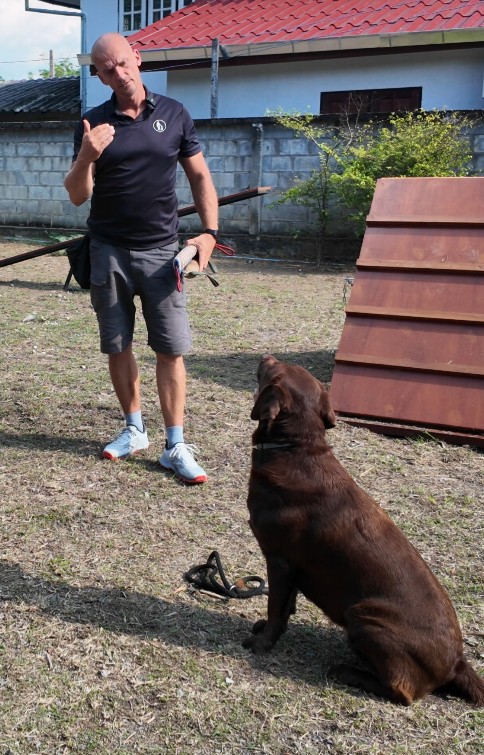


Genetics shape vulnerability. Certain breeds inherit risks for compulsive acts, from tail-chasing Bull Terriers to paw-licking Retrievers. Recognising these predispositions helps guide prevention and healing.
Evidence-Based Treatment Approaches That Really Work
Environmental Enrichment: Redesigning Your Dog’s World
Creating an environment that naturally prevents compulsive behaviors is your first line of defense. Structured daily routines provide predictability that reduces anxiety – your dog knows when meals, walks, and playtime happen, eliminating the stress of uncertainty. This doesn’t mean rigid scheduling, but rather consistent patterns that help your dog feel secure.
Mental stimulation is as crucial as physical exercise. Puzzle feeders, scent work, and training games engage your dog’s mind in healthy ways. A tired brain is less likely to get stuck in compulsive loops. Consider rotating toys weekly to maintain novelty, hiding treats for treasure hunts, or teaching new tricks that challenge your dog’s problem-solving abilities.
Stress reduction requires identifying triggers. Keep a behavior diary noting when compulsive episodes occur, what preceded them, and environmental factors present. You might discover patterns – perhaps loud noises trigger tail-chasing, or being left alone initiates excessive licking. Once you identify triggers, you can systematically address them through environmental modifications or desensitization training.
Behavioral Modification Techniques That Create Lasting Change
Redirection without confrontation is key to breaking compulsive cycles. When you see the behavior starting, don’t punish or forcibly stop your dog – this increases anxiety and can worsen the compulsion. Instead, cheerfully redirect to an incompatible behavior. If your dog starts compulsive licking, engage them in a game of tug or practice some tricks. The goal is making the alternative more rewarding than the compulsion.
Your behavioral modification toolkit should include these evidence-based strategies that professional trainers and behaviorists recommend:
- Interruption and redirection protocol: Keep a “redirect kit” ready with high-value treats, favorite toys, and interactive puzzles. The moment you notice pre-compulsive signs (restlessness, seeking isolated spots), engage your dog immediately with an alternative activity.
- Differential reinforcement of other behaviors (DRO): Reward your dog for ANY behavior that isn’t the compulsive one. Set a timer for increasing intervals (start with 30 seconds, build to minutes) and reward if no compulsive behavior occurred during that time.
- Response substitution training: Teach a specific incompatible behavior to perform instead. For tail-chasers, train a strong “sit-stay” or “down-stay.” For lickers, teach them to hold a toy in their mouth when they feel the urge.
- Relaxation protocol: Implement Dr. Karen Overall’s relaxation protocol or similar systematic training that teaches your dog to remain calm despite distractions, building their overall emotional regulation capacity.
- Environmental management: Remove or modify triggers when possible. Use bitter apple spray on licked surfaces, provide alternative textures for dogs who compulsively lick fabrics, or use visual barriers for shadow-chasers.
- Scheduled “controlled sessions”: For some dogs, allowing brief, controlled engagement with a modified version of the behavior (like supervised licking of a frozen Kong) can reduce overall compulsion intensity.
Systematic desensitization addresses underlying anxiety. If specific triggers cause compulsive behaviors, gradually expose your dog to very mild versions of the trigger while keeping them calm and rewarded. For instance, if separation triggers compulsions, start with one-second departures, gradually building duration as your dog remains relaxed. This requires patience – rushing the process can sensitize rather than desensitize.
Counter-conditioning changes emotional responses. Pair triggers with positive experiences to change your dog’s emotional association. If grooming triggers compulsive licking afterward, follow each brief, gentle grooming session with your dog’s favorite activity. Over time, the trigger becomes a predictor of good things rather than stress, reducing the need for compulsive coping mechanisms.
Nutritional Support: Feeding the Brain for Better Behavior
Omega-3 fatty acids support brain health and can reduce inflammation that contributes to compulsive behaviors. Fish oil supplements or diets rich in salmon can provide these essential nutrients. The anti-inflammatory effects might help address the neuroinflammation associated with compulsive disorders, while also supporting overall cognitive function.
Tryptophan-rich foods boost serotonin production naturally. Turkey, eggs, and specially formulated calming diets contain this amino acid precursor to serotonin. While not a cure-all, optimizing nutrition provides your dog’s brain with the building blocks needed for healthy neurotransmitter function. Some dogs show marked improvement with dietary changes alone.
Avoid foods that spike anxiety. High-sugar treats, foods with artificial colors, and caffeinated substances (like chocolate, which is toxic anyway) can exacerbate behavioral issues. Some dogs are sensitive to certain proteins or grains that trigger inflammation, indirectly worsening compulsive behaviors. An elimination diet might reveal hidden food sensitivities contributing to the problem.
Medical Interventions: When Medication Becomes Necessary
Sometimes, compulsive behaviors are so severe that behavioral interventions alone aren’t enough. SSRIs like fluoxetine or clomipramine can be game-changers for dogs with severe compulsions. These medications work by increasing serotonin availability in the brain, helping to break the compulsive cycle. They’re not “doggy Prozac” to make your pet artificially happy – they restore normal brain chemistry that allows behavioral therapy to work.
Anticonvulsants might be necessary for compulsions with neurological components. Bull Terriers with compulsive tail-chasing often respond well to phenobarbital, supporting the theory that their behavior involves partial seizures. This isn’t about sedating your dog – it’s about addressing the underlying electrical misfiring in their brain.
Combination therapy often works best. Medication alone rarely solves compulsive behaviors completely. Think of medication as creating a window of opportunity where your dog’s brain is calm enough to learn new patterns through behavioral modification. The goal is often to use medication temporarily while establishing new habits, then gradually reduce or eliminate it as your dog improves. Always work closely with your veterinarian to monitor effects and adjust treatment plans. 😄

Creating a Comprehensive Treatment Plan
The Multi-Modal Approach: Why One Solution Isn’t Enough
Treating compulsive behaviors requires attacking the problem from multiple angles simultaneously. Combining environmental, behavioral, nutritional, and sometimes medical interventions creates synergy where each element reinforces the others. Think of it like treating a complex human health condition – you wouldn’t rely on just medication or just lifestyle changes.
Timing and coordination matter. Starting medication might provide the calm needed for behavioral modification to take hold. Environmental enrichment reduces overall stress levels, making your dog more receptive to training. Nutritional support provides the biological foundation for improvement. Each piece supports the others, creating momentum toward recovery.
Individualization is crucial because every dog’s compulsions have unique triggers, manifestations, and maintaining factors. What works brilliantly for one dog might be ineffective for another. This is why working with professionals who can assess your specific situation and tailor interventions accordingly is so valuable.
Working with Your Veterinary Team
Start with a thorough veterinary examination to rule out medical causes. Blood work, urinalysis, and possibly imaging studies can reveal hidden health issues driving compulsive behaviors. Don’t skip this step – treating behavioral symptoms while missing underlying medical conditions is like putting a bandaid on a broken bone.
Consider consulting a veterinary behaviorist for severe cases. These specialists have advanced training in both veterinary medicine and animal behavior, allowing them to address the full spectrum of factors contributing to compulsions. They can prescribe medications while also designing comprehensive behavioral modification programs tailored to your dog’s specific needs.
Regular monitoring and adjustment keep treatment on track. Compulsive behaviors rarely resolve overnight, and what works initially might need modification as your dog progresses. Keep detailed records of behavior frequency, intensity, and duration, along with any side effects from medications or reactions to behavioral interventions. This data helps your veterinary team make informed adjustments to optimize treatment.
The Long-Term Management Perspective
Recovery is a journey, not a destination. Many dogs with compulsive behaviors require ongoing management rather than achieving a complete “cure.” This doesn’t mean failure – it means adapting your expectations and celebrating incremental improvements. A dog who goes from tail-chasing for hours to having brief episodes once a week has made tremendous progress.
Relapse prevention requires vigilance. Stress, illness, or environmental changes can trigger return of compulsive behaviors even after successful treatment. Maintaining environmental enrichment, continuing stress management strategies, and watching for early warning signs helps prevent full relapse. Think of it like managing a chronic condition that requires ongoing attention but doesn’t have to dominate your lives.
Building resilience protects against future problems. Dogs who’ve recovered from compulsive behaviors often develop better overall coping skills through the treatment process. The training, enrichment, and bonding that occur during recovery create a stronger, more adaptable dog who’s better equipped to handle future stressors without reverting to compulsive behaviors. 🐾
Special Considerations for Different Life Stages
Puppyhood: Prevention Is the Best Medicine
Early intervention can prevent compulsions from developing. Puppies showing repetitive behaviors need immediate attention before patterns become entrenched. What might seem like cute quirks – excessive tail-chasing or persistent licking – could be early warning signs. Address them now while your puppy’s brain is still highly plastic and responsive to intervention.
Proper socialization is protective. Puppies exposed to varied experiences, environments, and social interactions during critical developmental periods (3-14 weeks) develop better coping mechanisms. This doesn’t mean overwhelming your puppy, but rather controlled, positive exposures that build confidence and adaptability. A well-socialized puppy is less likely to develop anxiety-driven compulsions later.
Appropriate stimulation prevents boredom-based compulsions. Puppies have enormous energy and curiosity that needs healthy outlets. Interactive toys, training sessions, and supervised play provide the mental and physical stimulation that prevents compulsive behaviors from filling the void. Remember that different breeds have different needs – a working breed puppy requires more intensive engagement than a companion breed.
Adult Dogs: Breaking Established Patterns
Changing entrenched behaviors requires patience and consistency. Adult dogs with established compulsive behaviors have literally worn grooves in their neural pathways. Breaking these patterns takes time – often months of consistent intervention. Don’t get discouraged by slow progress; every small improvement is rewiring your dog’s brain.
Address life changes proactively. Major transitions – moving homes, family changes, or schedule shifts – can trigger or worsen compulsive behaviors in adult dogs. Anticipate these stressors and increase support during transitions. Maintain routines as much as possible, increase enrichment activities, and consider temporary anti-anxiety support if needed.
Senior Dogs: Compassionate Management
Age-related factors complicate treatment. Senior dogs might develop compulsive behaviors due to cognitive dysfunction, sensory decline, or chronic pain conditions. Treatment must account for these factors – a senior dog might not respond to behavioral modification the same way a younger dog would, requiring more emphasis on environmental management and medical intervention.
Quality of life becomes the priority. For elderly dogs with severe compulsions, the goal might shift from elimination to management that ensures comfort and dignity. This might mean accepting some level of compulsive behavior while preventing self-injury and maintaining overall well-being. Sometimes, the kindest approach is the gentlest one.
Regular reassessment is crucial as senior dogs’ needs change rapidly. What works one month might not work the next as health conditions evolve. Stay closely connected with your veterinary team and be prepared to adjust strategies based on your dog’s changing capabilities and needs.
Understanding the Human Element: Your Role in Recovery
Managing Your Own Emotions
Watching your beloved dog struggle with compulsive behaviors can be heartbreaking and frustrating. Your emotional state affects your dog’s recovery. Dogs are incredibly sensitive to human emotions, and your stress, frustration, or anxiety can exacerbate their compulsive behaviors. This isn’t about blame – it’s about recognizing that managing your own emotional response is part of the treatment process.
Practice patience and compassion – for your dog and yourself. Recovery often involves setbacks, and progress might be slower than hoped. Remember that your dog isn’t choosing to be difficult; they’re struggling with a genuine disorder that affects their brain function. Celebrate small victories and forgive yourself for moments of frustration.
Building a Support Network
You don’t have to face this alone. Connect with other owners dealing with similar issues through online forums, local support groups, or training classes. Sharing experiences, strategies, and encouragement makes the journey less isolating. Sometimes just knowing others understand what you’re going through provides immense relief.
Professional support extends beyond veterinarians. Certified dog trainers, veterinary behaviorists, and even human therapists who understand the human-animal bond can provide valuable support. Don’t hesitate to seek help for yourself if your dog’s condition is affecting your mental health – taking care of yourself enables you to better care for your dog.
Conclusion: Hope and Healing for Your Compulsive Companion
Living with a dog who has compulsive behaviors challenges both of you, but recovery is possible. Through understanding the complex interplay of genetics, neurobiology, environment, and medical factors, you’re equipped to provide comprehensive support for your furry friend. Remember that these behaviors aren’t defiance or stubbornness – they’re your dog’s attempt to cope with distress they can’t express in words.
The journey toward recovery requires patience, consistency, and often professional support. Some dogs achieve complete resolution of their compulsive behaviors, while others learn to manage them at tolerable levels. Either outcome represents success when it improves your dog’s quality of life and strengthens your bond. Your commitment to understanding and helping your dog through this challenge speaks volumes about the love you share.
Is your dog showing signs of compulsive behaviors? Don’t wait for them to worsen. Start with a veterinary examination to rule out medical causes, then build a comprehensive treatment plan addressing all contributing factors. With dedication, the right support, and evidence-based interventions, you can help your beloved companion find peace and rediscover the joy in being a dog. Your furry friend is counting on you, and you won’t let them down. 🧡


